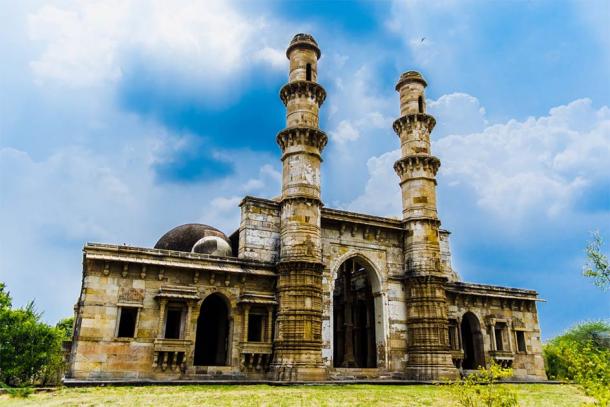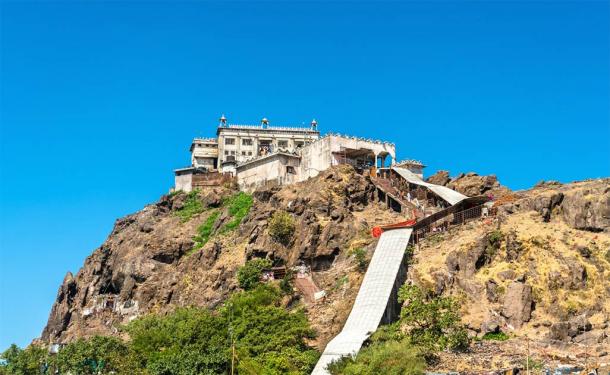India is home to many amazing archaeological sites and architectural wonders. Champaner-Pavagadh Archaeological Park contains the remains of a city and amazing structures from many different cultures and epochs in India’s vast history with both Hindu, Jain, and Muslim monuments. This UNESCO World Heritage site is one of the most important cultural heritage sites in India.
The History of Champaner-Pavagadh Archaeological Park
The area was inhabited since at least the Copper Age but was later abandoned. According to legend, in around 400 AD, a large urban settlement was established here by a Hindu deity . What experts have verified is that a city was built here by Vanaraja, king of the Chavada Dynasty, said to honor General Champa in the 8 th century AD.
A number of Hindu monarchs ruled the area from a fortress on Pavagadh Hill. In 1297, the Hindu ruler Ram Gaur Tuar was defeated and the city was sacked by Muslims from the Khaliji Dynasty. The Muslims did not retain control of the area and it was settled by Rajputs. This caste of warriors has been likened to the Spartans.
The Rajputs managed to fight off many Muslim attacks until the 16 th century when they were defeated by the Sultan of Gujarat . Some Rajputs converted to Islam and the city was renamed Mahmudabad Champaner.

Kevda Masjid a mosque, part of the Champaner-Pavagadh Archaeological Park, a UNESCO World Heritage Site. ( abhishek / Adobe Stock)
The city became extraordinarily wealthy thanks to its manufacturers and trade, but in the 1530s it was sacked by the Mughals and went into rapid decline and was later abandoned, possibly by the late 16 th century.
By 1800, when British officials visited the site, they found only a few hundred local tribesmen. The fame of the former city grew, and successive Indians helped to preserve the site. Today it is one of the most important tourist sites in Gujarat.
The Marvels of Champaner-Pavagadh Archaeological Park
The Champaner-Pavagadh Heritage site extends across 1,330 hectares (3,280 acres). Champaner is overlooked by Pavagadh Hill’s historical fort with its well-preserved gates. The marble Hindu temple , flanked by lantern towers, is visited by many believers every year.
At the summit of Pavagadh Hill stands Kalika Mata Temple, where a Hindu festival is held every year. There are also several Jain temples on the hill that date to the Medieval era. The extraordinarily well-preserved walls of Champaner date back to the 15 th century.

Kalika Mata Temple at the summit of Pavagadh Hill – Gujarat, India ( Leonid Andronov / Adobe Stock)
In total there are eleven types of buildings within the park and there are an estimated 114 historical ruins and buildings. One of the most remarkable of them is a step-well that was both water resource and a shrine. There are up to a dozen mosques in the park and the most important of these is the Jama Masjid, a unique blend of Muslim and Hindu architecture completed in 1656. This two-story building has many fine towers. The smaller Kevda Masjid and cenotaph is noteworthy for its minarets with spectacular globe-like domes.
In the former royal precinct of the old city some remarkable mausoleums and tombs dating from the period of Muslim rule can be found, including the mausoleum of Sakar Khan which has an impressive dome. There is also a tomb to a Muslim saint which is colorfully decorated.
Several of the small structures were built by different rulers, such as the pavilions in the archaeological park overlooking several man-made ponds. There are also a number of ruins including a watchtower and a mint. The site has several bricks granaries that were designed to store food for armies.
Visiting Champaner-Pavagadh Archaeological Park in India
The site is 85 miles (144 km) from the bustling city of Ahmedabad, and public transport to the site is available. The fee charged to enter the park gives visitors access to the magnificent sites as well as the extensive walks around the vast area. Guides and information boards available to help visitors appreciate the marvels of Champaner-Pavagadh.
Top image: Jami Masjid, a major tourist attraction at Champaner-Pavagadh Archaeological Park – Gujarat, India Source: Leonid Andronov / Adobe Stock
By Ed Whelan
References
Munshi, A., & Shinde, V. (2018). C ity, Landscape and Defence; A Case Study of Champaner Pavagadh Archaeological Park
Sinha, A. (2004). Champaner‐Pavagadh Archaeological Park: A Design Approach . International Journal of Heritage Studies, 10(2), 117-128
Available at: https://www.tandfonline.com/doi/abs/10.1080/13527250410001692859
Sinha, A., & Sharma, Y. (2009). Urban design as a frame for site readings of heritage landscapes: A case study of Champaner-Pavagadh, Gujarat, India . Journal of Urban Design, 14(2), 203-221
Available at: https://www.tandfonline.com/doi/abs/10.1080/13574800802670440
Related posts:
Views: 0
 RSS Feed
RSS Feed

















 August 14th, 2020
August 14th, 2020  Awake Goy
Awake Goy 





 Posted in
Posted in  Tags:
Tags: 
















